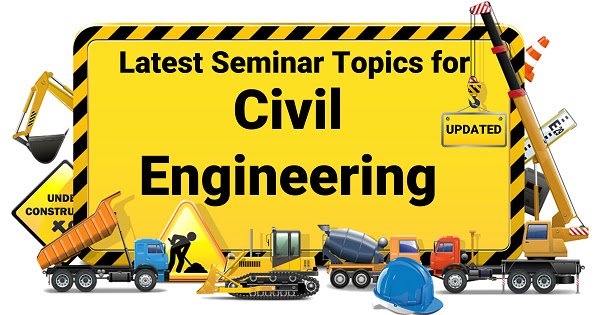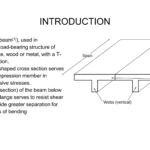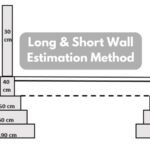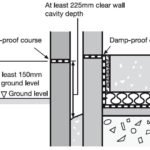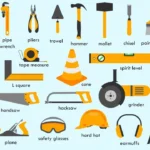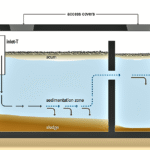Choosing the right seminar topic can make a big difference in your learning, grades, and future career. A good topic is current, practical, and researchable. It should match your interests and the resources you have. This long guide helps civil engineering students pick excellent seminar topics in 2025 and beyond. It also shows how to refine an idea into a short project, prepare slides, and present with confidence. The language is simple and paragraphs are short for easy reading. Where useful, I include example abstracts, tools to use, and a table of 100+ fresh topic ideas grouped by discipline. This is tailored for Indian students but useful anywhere.
Why seminar topics matter
Seminars are more than academic chores. They train you to research, analyse and explain technical ideas. Good seminars help you:
- Learn how to search literature and standards.
- Practice public speaking and technical writing.
- Apply classroom theory to real-world problems.
- Build a portfolio that employers and professors notice.
A carefully chosen seminar topic can also lead to a final-year project or an industry internship. For these reasons, picking a useful, up-to-date topic is worth the time. Recent industry trends—like BIM, AI, sustainable materials and smart cities—are excellent starting points because they link academics to jobs. StartUs Insights+1
How to pick a seminar topic: step-by-step
- Start with your interests. Pick topics that excite you. You will spend time reading and presenting, so interest keeps you motivated.
- Scan recent trends. Look at industry trends such as BIM, drones, AI, self-healing concrete, and sustainable materials. Papers and industry blogs show what is current. Intellectsoft+1
- Match scope and time. Seminars are short. Choose a topic that can be covered in 10–20 slides and 15–25 minutes. Avoid projects that need years of lab work unless you narrow the focus.
- Check resources. Confirm access to data, software (like AutoCAD, STAAD, ETABS, Revit, QGIS), lab equipment, or RMC/khan lab help. If you need field data, check permissions early.
- Find a novel angle. Don’t pick an overused title word-for-word; add a twist. Example: instead of “BIM”, try “BIM for small contractors — cost-benefit case study in [your city]”.
- Ask your guide. Share a short proposal (1 paragraph) and ask for feedback. Supervisors often help narrow the scope and point to references.
Following these steps keeps your seminar focused and practical. The emphasis on trends such as smart cities, sustainability and AI is consistent with topics industry is hiring for today. StartUs Insights+1
What examiners look for in a seminar
Examiners grade on clarity, technical depth and presentation skills. Typical checklist:
- Clear problem statement and relevance.
- Brief literature review or prior work summary.
- Simple methodology or demonstration.
- Data analysis (graphs, tables) or lab/field observations.
- Practical conclusions and suggestions for future work.
- Clean slides and confident delivery.
If your seminar includes a small demo, spreadsheet, or video, it usually scores higher. Industry-oriented topics that show applications or case studies are especially valued in Indian colleges. civil.iitb.ac.in
Also Read Shoring in Construction: Types, Applications, Advantages and Best Practices in India
Major categories and topic ideas (100+ topics)
Below are topic ideas grouped by major civil engineering branches. Use these directly or adapt.
Structural Engineering (20+)
- Base isolation for small buildings — design & performance.
- Seismic retrofitting techniques for masonry structures.
- Performance of fibre-reinforced concrete in beams.
- Self-healing concrete: lab evaluation and possible use in India.
- Comparative study: prestressed vs reinforced concrete bridges.
- Behaviour of reinforced concrete after fire exposure.
- Lightweight concrete for high-rise cores.
- Use of recycled steel in reinforcement — pros and cons.
- Parametric design of timber-concrete composite floors.
- Automation in formwork and casting (slipform, jumpform).
Geotechnical Engineering (12+)
- Soil stabilization using plastic waste or fly ash.
- Ground improvement for metro/rail corridors.
- Seepage analysis for earth dams with GIS-based data.
- Performance of stone columns in soft soils.
- Liquefaction assessment using simplified methods for Indian sites.
- Soil-structure interaction for pile foundations using FEM.
Transportation & Highway (12+)
- Plastic-modified bitumen pavements in India.
- Use of recycled aggregates in road base layers.
- Intelligent Transport Systems (ITS) for Indian mid-size cities.
- Pavement condition survey using smartphone imaging and AI.
- Permeable pavements for monsoon-prone regions.
Water Resources & Environmental (15+)
- Rainwater harvesting optimization for apartment complexes.
- Greywater recycling at community scale.
- AI for flood forecasting in urban watersheds.
- Low-cost constructed wetlands for small towns.
- Decentralized wastewater treatment for peri-urban settlements.
Construction Management & Technology (15+)
- BIM adoption by small contractors — barriers and benefits.
- 4D scheduling and clash detection for a campus project.
- Cost overrun analysis in Indian road projects.
- Drone-based site progress monitoring.
- Lean construction practices for Indian small contractors.
Materials & Concrete Tech (12+)
- Geopolymer concrete using local industrial waste.
- Alkali-activated cements for low-carbon construction.
- Nano-additives for concrete durability.
- Textured surfaces for skid resistance in local roads.
Smart & Digital Civil Engineering (8+)
- Digital twin for campus infrastructure.
- IoT-based structural health monitoring (SHM) prototype.
- Machine learning for predicting concrete compressive strength.
- Blockchain for construction supply chain transparency.
Sustainability, Policy & Urban Planning (10+)
- Green roofs and thermal comfort in Indian apartments.
- Urban heat island mitigation strategies for Indian cities.
- Transit-oriented development: policy and case studies.
- Circular economy: construction and demolition waste management.
Case-studies & Forensics (10+)
- Forensic analysis of a local collapsed structure — lessons learned.
- Retrofitting a heritage building for seismic resistance.
The full table at the end of this article lists 100+ topic ideas grouped and ranked by novelty and feasibility. Many of these topics map directly to recent industry trends such as BIM, AI, sustainability and modular construction. ConstructionPlacements+1
Table — Top 30 seminar topics (shortlist for quick choice)
| Rank | Topic | Why it’s relevant |
|---|---|---|
| 1 | BIM for small contractors | Industry demand + practical case studies. StartUs Insights |
| 2 | Recycled plastic in asphalt | Sustainability + local waste use. Karpagam Engineering College |
| 3 | IoT for water-level monitoring | Smart cities + low-cost sensors. Encardio Rite |
| 4 | Self-healing concrete | Cutting-edge materials research. Encardio Rite |
| 5 | Drone-based site surveying | Fast data capture; students can demo. Intellectsoft |
| 6 | Geopolymer concrete with fly ash | Low-carbon materials in India. Vocal |
| 7 | Pavement condition survey using AI | Practical transport application. StartUs Insights |
| 8 | Rainwater harvesting optimization | Local applicability + sustainability. |
| 9 | Digital twin for campus utilities | Cross-disciplinary and modern. Encardio Rite |
| 10 | Seismic retrofitting of masonry houses | Real-world safety relevance. |
How to prepare a seminar paper (structure and checklist)
A typical seminar presentation comprises slides and a short report (4–8 pages). Use this structure:
- Title slide. Include your name, guide, and date.
- Introduction (1–2 slides). Why this topic? Real-world relevance.
- Literature snapshot (2–3 slides). 8–10 recent references or standards (use IS, ASTM, journal papers). Cite Indian codes where relevant.
- Objectives (1 slide). What will you show? A demo, a small experiment, a case study?
- Methodology (2–3 slides). Field survey, lab test, software simulation, or literature review. Keep it simple and reproducible.
- Results (3–6 slides). Graphs, photos, screenshots, and interpreted tables. Visuals matter.
- Discussion (1–2 slides). What do the results mean? Limitations.
- Conclusions and future work (1–2 slides). What can be done next? How would you scale it?
- References (1 slide) and Q&A.
Report (4–8 pages) should mirror slides with short paragraphs, figures and references. Use standard citation styles (APA or IEEE). Submit code and data if asked.
Tools and software students can use (India-accessible)
| Category | Tools / Software | Notes |
|---|---|---|
| CAD & BIM | AutoCAD, Revit, Navisworks | Many colleges provide student licenses. |
| Structural analysis | STAAD.Pro, ETABS, SAP2000 | Free student versions exist. |
| Geotech | PLAXIS (demo), GEO5 (trial) | Use simplified hand-methods if software unavailable. |
| GIS & mapping | QGIS (free) | Useful for watershed or site mapping. |
| Data & AI | Python (Pandas, scikit-learn), MATLAB | ML projects common for predictive modelling. |
| Drone photogrammetry | DroneDeploy, Pix4D (trial) | For site surveys; use safe flying rules. |
| SHM prototypes | Arduino/Raspberry Pi + sensors | Low-cost structural monitoring demos available. |
Most software has student or trial versions. Indian colleges often have campus licenses for Revit, STAAD or ETABS. Free open-source alternatives like QGIS, Python and Blender can also produce good results. BIM Mantra Academy+1
Example short abstracts (ready to use or adapt)
1. BIM for Small Contractors — Cost-Benefit Case Study (Sample Abstract). Building Information Modeling (BIM) is widely used by large contractors, but adoption among small and medium enterprises (SMEs) is low. This seminar analyzes BIM adoption barriers in [City], models a small residential project in Revit, and quantifies time savings in clash detection and coordination. The study uses interviews with three local contractors and a simple 4D simulation to demonstrate benefits. Recommendations include low-cost training modules and workflow templates.
2. IoT-based Rainwater Harvesting Optimization (Sample Abstract). Urban water stress is growing in Indian cities. This seminar proposes a low-cost IoT system for monitoring rooftop rainwater harvesting tanks. A prototype with water-level sensors and a cloud dashboard was deployed on an apartment building. Results show better utilization and reduced municipal water use during monsoon months. The seminar also outlines cost and maintenance aspects for real-world adoption.
Fieldwork and demo ideas that score well
- Mini-lab for self-healing concrete. Cast small cubes with bacterial agents or capsules and show crack closure images.
- Drone survey + photogrammetry demo. Capture 2D orthophoto of campus and show short mapping workflow.
- Simple IoT SHM prototype. Attach low-cost accelerometer to a simulated beam and show frequency change.
- BIM clash detection demo. Model a small building in Revit and show coordination benefits.
Hands-on demos make seminars memorable and show practical skills to examiners.
Referencing Indian codes and journals
When your topic touches design or standards, cite Indian codes such as IS 456 (concrete), IS 1893 (seismic), IRC codes (roads), and CPHEEO manuals (water). For credibility, also cite recent Indian research papers, conference proceedings (IITs, IISc, ICI, IEI) and government reports (MoHUA, NHAI). Using Indian data and codes makes your seminar more locally relevant. civil.iitb.ac.in
Presentation tips (short and practical)
- Use a clean slide template and readable fonts.
- Limit text: one idea per slide. Use bullets and images.
- Show one clear graph or table per slide. Label axes and units.
- Practice timing: rehearse to 12–15 minutes if required.
- Prepare for common questions: methodology, assumptions, and limitations.
- Use a short handout (one page) with key takeaways for your classmates and examiners.
Evaluation criteria — what makes an A+ seminar
- Relevance: topic links to current problems or technologies.
- Clarity: clear problem statement and approach.
- Depth: a reasonable literature snapshot and solid methodology.
- Visualization: clean graphs, photos and tables.
- Originality: a new angle or small demo.
- Delivery: confident speech and good answers in Q&A.
Common pitfalls students must avoid
- Choosing an overly broad topic and running out of time.
- Using plagiarized content or slide templates without attribution.
- Not rehearsing the talk; poor timing and rushed conclusions lose marks.
- Ignoring practical feasibility: a lab-heavy topic without lab access is risky.
- Forgetting to cite Indian codes or local data when relevant.
FAQ — Frequently Asked Questions
Q1. How long should a seminar report be?
A1. Usually 4–8 pages. Follow your department’s format. Keep it concise and focused.
Q2. Can I use the same topic for seminar and final year project?
A2. Yes — many students expand a seminar topic into a final-year project by deepening the methodology or adding field/lab work.
Q3. Are surveys acceptable for seminar topics?
A3. Yes. A well-designed survey (with 30–100 responses) on BIM awareness or contractor practices can be a solid seminar.
Q4. Do I need experimental data?
A4. Not always. Literature reviews, simulation case studies and field surveys are valid. But a small demo boosts credibility.
Q5. Where can I find recent research papers?
A5. Use Google Scholar, ResearchGate, and the digital libraries of ASCE, Elsevier, IEEE. Also check Indian institute repositories (IITs, IISc).
Final checklist before you submit
- Topic title and short abstract ready.
- 10–12 recent references (include Indian codes).
- Methodology and one demo or small case study outlined.
- Slides (12–20) and a short report (4–8 pages).
- Rehearsed talk and Q&A practice.
- Submit any required forms and get approval from the guide.
Conclusion
Picking the right seminar topic is the first step toward academic success and employability. Focus on current trends such as BIM, AI, drones, sustainable materials, and smart infrastructure. Choose a topic that fits the seminar timeframe, your access to resources, and your interest. Add a practical twist — a small demo, local case study, or simple simulation — to make your presentation stand out. Use Indian codes and local data where applicable to increase relevance. Finally, practise your talk, prepare crisp slides, and be ready for questions. If you follow the steps in this guide, you will be well placed to deliver a strong, modern seminar that impresses examiners and peers.
Appendix — Extended list of 100+ seminar topic ideas (compact)
(A long list covering Structural, Geotech, Transportation, Water Resources, Environmental, Construction Management, Materials, Smart/Cyber topics, and Case Studies. Pick any and tailor the scope to seminar length.)
Structural: Self-healing concrete, FRP retrofits, base isolation for small buildings, modular steel structures, 3D-printed formwork, behavior of recycled aggregate concrete, light-gauge steel framing.
Geotechnical: Plastic waste as soil stabilizer, stone columns under service loads, micro-pile underpinning, slope stability with vegetation, geosynthetics in retaining walls.
Transportation: Plastic roads, permeable pavements for monsoon cities, smart traffic signal optimization, e-scooter infrastructure impact, pavement micro-texture for safety.
Water & Environment: Decentralized wastewater for housing colonies, IoT for water distribution losses, river rejuvenation case study, blue-green infrastructure for flood mitigation.
Construction Management: BIM for clash detection, 4D construction scheduling, modular construction cost analysis, safety culture assessment in Indian SMEs.
Materials: Geopolymer bricks, recycled glass aggregates, corrosion-resistant reinforcements, nano-silica in mortar.
Smart & Digital: Digital twin for campus, ML models for predicting concrete strength, drone-based site inspection, blockchain for material traceability.
Policy & Urban Planning: Transit-oriented development, waste-to-energy feasibility, slum upgrading case study, circular economy for C&D waste.
(If you want, I can export this appendix into a downloadable PDF with short abstracts for 40 of these topics.)
